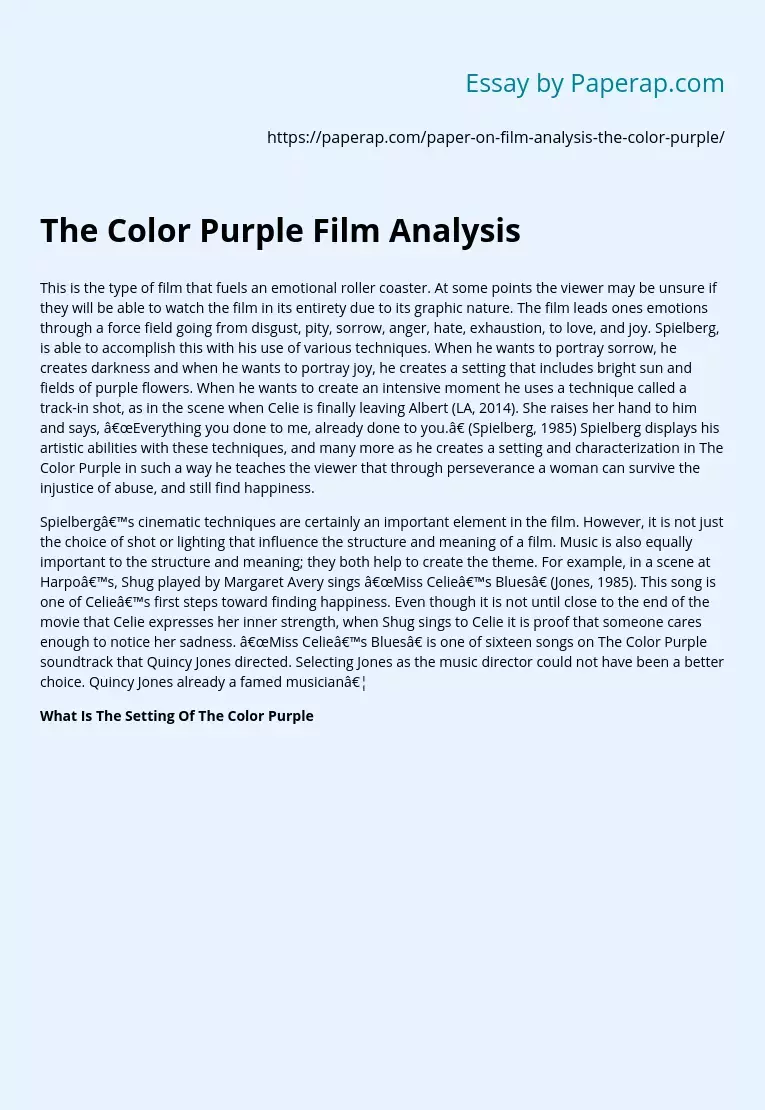The Color Purple Film Analysis
This is the type of film that fuels an emotional roller coaster. At some points the viewer may be unsure if they will be able to watch the film in its entirety due to its graphic nature. The film leads ones emotions through a force field going from disgust, pity, sorrow, anger, hate, exhaustion, to love, and joy. Spielberg, is able to accomplish this with his use of various techniques. When he wants to portray sorrow, he creates darkness and when he wants to portray joy, he creates a setting that includes bright sun and fields of purple flowers.
When he wants to create an intensive moment he uses a technique called a track-in shot, as in the scene when Celie is finally leaving Albert (LA, 2014). She raises her hand to him and says, “Everything you done to me, already done to you.” (Spielberg, 1985) Spielberg displays his artistic abilities with these techniques, and many more as he creates a setting and characterization in The Color Purple in such a way he teaches the viewer that through perseverance a woman can survive the injustice of abuse, and still find happiness.
Spielberg’s cinematic techniques are certainly an important element in the film. However, it is not just the choice of shot or lighting that influence the structure and meaning of a film. Music is also equally important to the structure and meaning; they both help to create the theme. For example, in a scene at Harpo’s, Shug played by Margaret Avery sings “Miss Celie’s Blues” (Jones, 1985).
This song is one of Celie’s first steps toward finding happiness. Even though it is not until close to the end of the movie that Celie expresses her inner strength, when Shug sings to Celie it is proof that someone cares enough to notice her sadness. “Miss Celie’s Blues” is one of sixteen songs on The Color Purple soundtrack that Quincy Jones directed. Selecting Jones as the music director could not have been a better choice. Quincy Jones already a famed musician…
What Is The Setting Of The Color Purple
The Color Purple Film Analysis. (2019, Dec 05). Retrieved from https://paperap.com/paper-on-film-analysis-the-color-purple/

